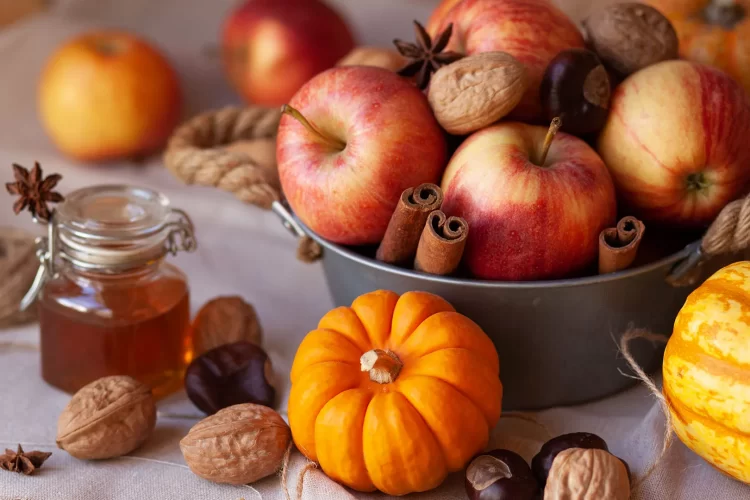Many people think of apples when they think of fruits that are in season during the fall. While apples are undeniably the highlight of the autumn harvest, they are far from the only seasonal fruit worthy of the attention of home cooks. Read on to learn about other versatile and flavorful fall fruits.
Pears
Pear season typically begins in August and lasts until October, making this fruit a farmers’ market major focus in the early autumn. While pears take well to cooking, a perfectly-ripe pear also has an appealing texture as a raw ingredient in salads or to enjoy on its own.
Pears from the Northwest come in ten different varieties with a variety of textures and flavor profiles, including juicy, sweet Bartletts, crisp, woodsy Boscs, and bite-sized, extra-sweet Seckels. Whatever variety you choose, remember that pears do not ripen on the tree. For the best flavor and texture, pears, like peaches and bananas, should be allowed to ripen at room temperature. Do you know how to tell if a pear is ripe? Examine the neck! With your thumb, gently press the pear’s neck (or stem end). If it slightly yields, your pear is ready to eat.
You can use fresh pears in Curried Butternut Squash or a Pear Soup.
Figs
Figs, like pears, are a late summer and early fall treat, with their season spanning from August to October and their territory largely centered in California. If you’re a home cook who hasn’t worked with fresh figs before (their dried counterparts are more popular in the US), give them a try this year, as their natural sweetness and almost-syrupy juiciness make them very valuable and versatile kitchen players.
Cranberries
Cranberries, which are tart but sweet, can be grown throughout the northern United States from September to November. Cranberries are at their most popular during Thanksgiving, when many households serve cranberry sauce as a tangy accompaniment to the savory turkey and stuffing on their dinner table. Cranberries, on the other hand, have possibilities that go far beyond the Thanksgiving table, and they make a delicious addition to salads, roasted meats, and baked goods.
You can use cranberries in fresh Cranberry Spinach Salad or make a fresh Cranberry Sauce,
Persimmons
Persimmons are grown primarily in California in the United States because they require mild temperatures and plenty of sunlight. The persimmon season begins in late September and ends in late December, with crops peaking in November and early December. This fruit has a distinct flavor that combines sweetness, acidity, and a hint of spice. Persimmons have a texture similar to tomatoes and plums, with soft interiors that respond well to baking. Persimmons can easily brighten up any dish, and they’re particularly good in salads, breads, and muffins.
Persimmons are classified into two types: hachiya and fuya. The hachiya persimmon is more astringent, which means the fruit’s high tannin content leaves a bitter aftertaste in your mouth. Wait until the hachiya persimmon feels like a water balloon in your palm to avoid the bitter taste. The flesh should have a jelly-like consistency. Fuya persimmons are shaped like tomatoes and can be eaten while still slightly firm. Both types of persimmons can be used to make jams, pies, bread, tea, and salsa!
Quinces
Quinces have a reputation for being finicky fruits; a slightly under ripe or overripe quince proves nearly inedible, so you’ll need to be a savvy shopper when selecting your quinces. But once you get your hands on these fruits, you’ll be richly rewarded by their sweet, almost floral flavor profile and subtle level of spice. Because quinces have a similar texture to apples, they’re an easy ingredient to substitute in pies, cakes, and jams. It grows throughout the United States and reaches its prime ripeness in October and November.
Although we can eat a variety of fruits all year, you must prefer to eat in accordance with the seasons.
To keep your body cool during the summer, eat tomatoes and berries. However, as the temperature begins to fall as we transition from summer to autumn, we must begin to warm our bodies from the inside out in order to prepare for the upcoming winter months.
Author Bio:
Hi, I’m Rana and I blog at ranasrecipe.com. My passion for food began very early in my life. And after managing a cafe, a granola business and helping other food businesses scale up, I found my true calling in creating wonderful recipes so that everyone can enjoy cooking as much as I do! Don’t forget to follow me on my social channels- instagram and pinterest.

